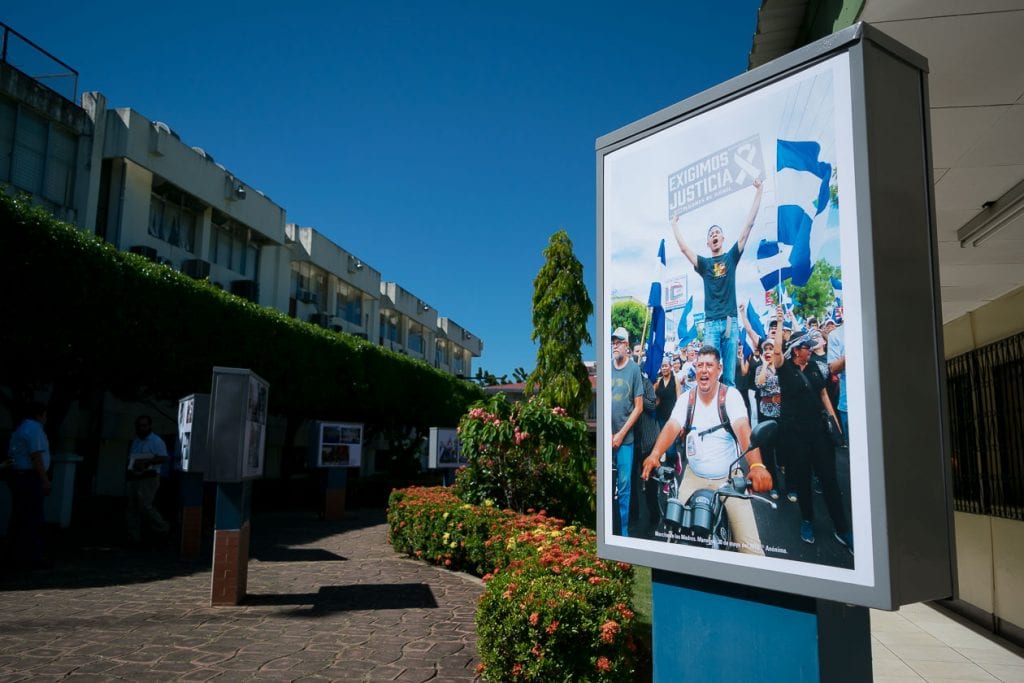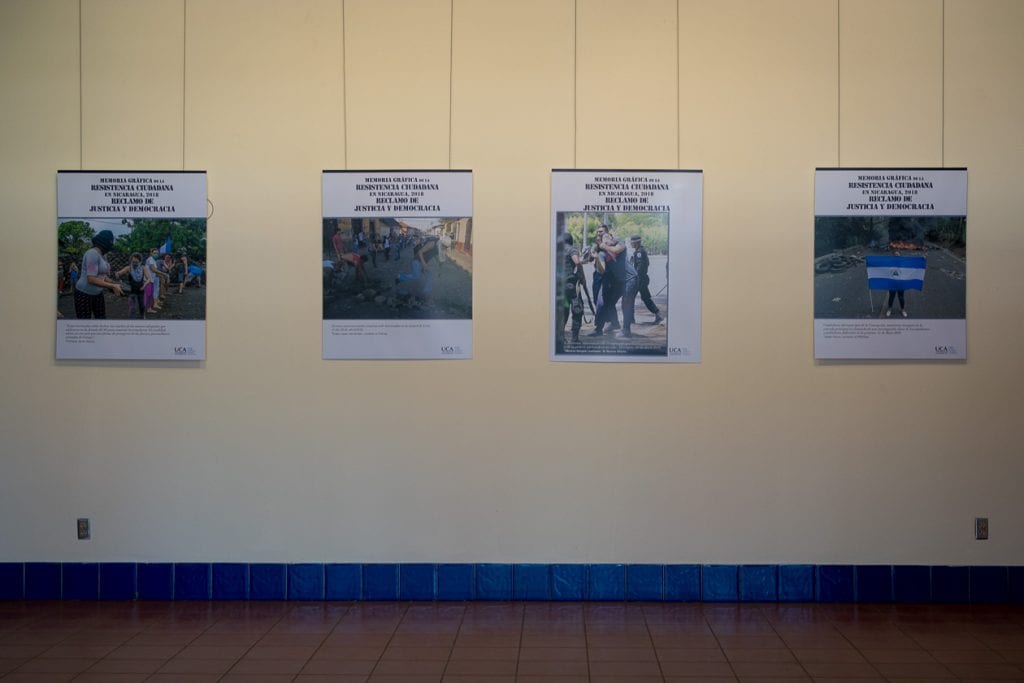Photo Expo of the Civic Rebellion at Nicaragua’s Central American University

At seven months of civic rebellion, it portrays the violent repression of Daniel Ortega’s Government.
By Franklin Villavicencio (Confidencial)
HAVANA TIMES – The moments that have marked the civic protests that began since April will remain immortalized in the Memory Lane and within the Nicaragua and Central America History Institute (IHNCA in Spanish), of the Central American University (UCA). They are faithful witnesses of the brutal repression perpetrated starting seven months ago by the Government of Daniel Ortega.
From roadblocks, barricades, entrenched youth, homes and buildings burned, policemen shooting; each photograph has the purpose of “preserving the historical memory” of the civic rebellion, stated photographer Claudia Gordillo, curator of the sample titled: “Graphic memory of the citizen resistance in Nicaragua, 2018. A demand for justice and democracy.”
“This is only a small sampling to not let our memory fail, so that we are clear that it is not a montage. All the images came to us as they are. I do not see any tricks, as some are saying,” added Gordillo in a press conference held last Friday, the day after the inauguration.
Some 88 images of 14 Nicaraguan photographers make up the exhibition, with works from La Prensa, El Nuevo Diario, Confidencial, the independent photographer Claudia Gordillo and the Spanish Javier Bauluz.
“Our flag is to inform and communicate”
For the photojournalist of La Prensa, Oscar Navarrete, “these photographs have the purpose of transcending in history.”

“I never imagined that my children were going to have to live this, I didn’t imagine that we would have a warlike and chaotic situation again. We were all surprised, it caught us unprepared,” added the photographer who also covered the armed conflict in 1980s, between the Contras and Sandinista.
This historical project originated in July and has been curated by the Nicaraguan documentarian Claudia Gordillo. Her photographic work has been exhibited in Washington, Madrid, Galicia, Stockholm, New York, Naples, Central America and Panama and now is part of the IHNCA.
“My idea was to make an exhibition only of Nicaraguan (photographers). Most of the good photographers who covered the insurrection (of 1979) were foreigners, but I can say with sincerity that foreigners could take wonderful photographs, but Nicaraguans live here and by the fact of living in the place where things are happening have more possibilities of taking photographs with richness in some details,” added the documentarist.
Tribute to independent journalism
The inaugural act was presided by the rector of the UCA, Father Jose Alberto Idiaquez, who reaffirmed the relevance that independent journalism has acquired. The Jesuit was accompanied by Carlos Tunnermann Bernheim, educator and member of the Blue and White Unity coalition, and Gordillo.

“By inaugurating this exhibition, the UCA fulfills a function of great importance to preserve for this and future generations the historic memory of one of the most tragic moments, but at the same time, the most promising of our future,” indicated Carlos Tunnermann in the opening of the event.
The exhibition will be open for six months, but due to threats of attacks that the UCA has received, access to the campus is limited. People who want to see the exhibition must first identify themselves by email and wait for authorization to enter.
“That has never happened at the History Institute, all our exhibitions have been open and have been free. There have never been such measures,” said Gordillo, who indicated that these measures respond to the threats against Rector Idiaquez.





